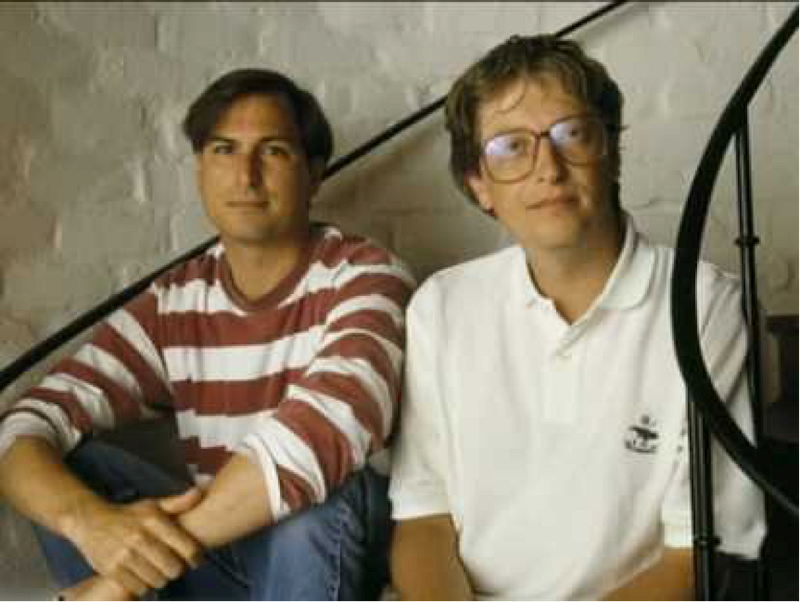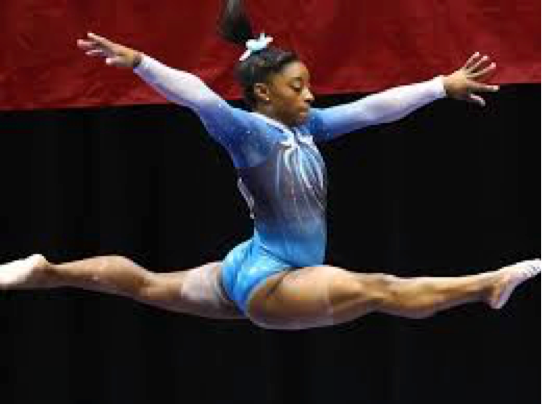Sara Roberts is a leading authority and hands-on expert on innovation, purpose, and culture. In her insightful, provocative talks, she advises on how to actively leverage culture and purpose to build organizational agility, customer connection, employee engagement, and a capacity for innovation and growth critical for success in a volatile and rapidly changing world. Here, Sara writes about how some companies “future proof” by being more interested in what’s possible than they are in what’s profitable, today:
Some companies are years ahead of competitors…how do they do it?
Some companies reach the future faster than others.
I don’t mean that they are the first to develop a new product or technology or the first to brand themselves in a meaningful new way or the first to flip the economics of a market with a disruptive business model, though they might do those things. I mean something bigger.
Somehow they get the way the world is going to work — what customers and employees really want, how market and social dynamics are shifting, how technology is about to change the game — and they jump in a freaking time machine and go there.
Then, six months or a year or even a decade later when the rest of us finally arrive, they’re already settled in — living, thinking, and working in a new way, and growing very fast.
How do they hack the future?
Back to the Future
Okay, they don’t really have a time machine. And nobody has yet, to my knowledge, broken the laws of physics. But does anyone doubt that this guy and the company he launched in 1962…

was thinking ahead of and something different than the people running Sears?
Or that these two dreamboats…

… were building companies that operated in a different dimension than IBM or Xerox during the 70s?
Some companies, as I said, arrive at the future faster than others. They’re prepared for what’s coming. They shape the market and influence demand through their products, services, and approaches to doing business but they also think and talk like that future before others; they attract people (talent, investors, customers) who are excited about it; and they strategize, prioritize and operate accordingly. When the future does arrive, they’re not rocked by change, thrown off course or forced to catch up, they’re well-positioned and ready to succeed in a very big way. They’re future proof.
In contrast, most companies fundamentally live in the past.
Their business units and policies are developed and organized to solve problems, challenges or needs that already exist or may even be relics of the past. Their strategic vision may be forward directed but is largely shaped and propelled by current or past understanding and is not likely to be predictive of any future possibility that breaks with the past. Their innovations may be timely but by the time they cycle into reality, time has moved on. They are highly resistant to change. Their measures of success matter internally, but may not matter at all to the customer or the world and may not reflect in any way meaningful trends or changes that are occurring. They frame their understanding of the customer’s needs to conform to the needs of their existing pipeline and production cycle. They rely on potentially obsolete information, entrenched communication paths, top-heavy and slow-moving hierarchies, historical perspectives, and internal priorities when making decisions.
They are not future proof. They are future vulnerable.
What’s in their Rocket Fuel?
Companies that are future proof are different.
They are more interested in what’s possible (future) than they are in what’s profitable (today).
They believe it is better to be fast (agile, lean, ready to pivot) than it is to be big (entrenched, scaled, reliant on resources).
They are not introspective (worried about internal priorities and concerns) but outrospective (worried about the customer and what’s on the horizon).
As a result, they are not resistant to change but always on their toes and moving forward. They are not reluctant to think differently or adopt new approaches but agile flexible, curious, and able to adapt, adjust, and learn on the fly. They are not complacent and self-congratulatory but hungry, urgent, and constantly questioning what’s right and assessing what works. They are not risk averse but opportunity driven.

This is what prepares them early for change, helps them abandon past positions, and propels them toward what’s possible.
You can think of that orientation as the overall fitness of a serious athlete. Active. Flexible. Good stamina and reflexes. Toned muscles. Competitive mindset. Optimistic. Highly focused but very aware of surroundings. Good nutrition. Lots of maintenance and care. Plenty of coaching.
So how do some companies manage that?
A Very Dynamic and Purpose-driven Culture
Every company has a culture, but few have the culture they need to be future-proof.
I find culture is the most widely misunderstood and misapplied idea in all of business.
Even companies that put a lot of weight on culture tend to think of it the wrong way. They rely on culture as an overlay to help make people happy or motivated or feel a sense of belonging or shared values, but those are side-effects not imperatives. In my experience, leaders who talk about the critical importance of their company culture don’t often appreciate the essential role culture plays in organizational success. A powerful culture is deeper, more profound, and more differentiated than the most compelling strategy, technology, or operating model, or even the most talented people. It’s a wonder fuel that propels the company, its teams and its people forward, igniting determination and innovation, bolstering commitment and passion, guiding decisions and behaviors, giving an edge. There’s no other force — not even leadership itself — that can impel the kind of adaptability, ingenuity, responsiveness, and resilience that companies need to prepare for the future, adjust to its opportunities, and get there fast.
The difficulty in understanding and appreciating the power of culture lies with its intangible nature. A company’s products, services and business model, and even its structure, processes, and practices are all “above the line.” These practical elements comprise “what” the organization does to be successful. Culture is everything that’s below the line. It’s “how” the organization actually works, acts thinks, processes information, makes decisions, collaborates, strategizes, executes, and faces customers.
A determined company with a timely product, good strategy and sound processes, etc., may be able to win in the short-term and manage or adjust to immediate problems or challenges by plowing through. But it can’t fake its way to the kind of resilience, passion, and ingenuity needed to innovate and thrive long-term. Such a company is vulnerable to the future because “what” it is doing to succeed can become obsolete overnight with a shift in competition, technology, markets, or customer needs. It needs a very different way of looking at culture, developing culture, and leveraging culture to become the kind of company that is directed toward the future.
Here are those elements:
1.) A Driving Purpose >>
Simon Sinek says it “starts with why” and he’s right. A clear sense of purpose is the directional energy behind culture.
If there’s anything more esoteric than culture, it’s purpose. Right now, every leader wants their company to be purpose-driven. But what does purpose even mean?
Purpose is rooted in values, aspirations, and sense of mission. However, the danger is that people think of purpose as somehow above the tawdry concerns of business: a kind of corporate social responsibility jacked up on Red Bull.
Successful startups are great examples. Founders start their companies for a reason. They have a clear sense of purpose around why they are doing what they are doing and much less clarity around how they’ll ultimately succeed. Nevertheless, they attract enthusiastic talent, customers and investors aligned to that purpose and the opportunities it represents.
But why? Why does their purpose matter?
Purpose is always in service of something, and the purpose of a business, as Peter Drucker once said, is a customer.
This clarity distinguishes organizations that are future proof. They are customer- or user-facing. And to meet the customer’s or user’s needs, they’ll do anything — including shape and create those needs out of nothing.
Purpose is where it starts. The customer is the point. The business is the channel. And culture is the vehicle or mechanism by which that purpose is acted on and realized.
2.) Urgency and Agility >>
Future proof companies are nimble.
That muscle tone, flexibility, nutrition, and fitness level I talked about — it’s there for a reason. No matter how big or established they are, future proof companies are never complacent or resistant to change. They’re not weighed down by their culture or held back by it, but are turbo-charged and fast because of it. They act like lean startups. They pivot on a dime and pounce on opportunity.
The energy for that goes back to their customer-purpose. That is the source of their urge to look up and out rather than inward, to scan constantly and be highly aware and responsive rather than complacent, and to listen intently to what the customer is saying and try to meet and even anticipate those needs. This is what makes them agile, flexible, and innovative. Introspective companies, in contrast, are fundamentally more bureaucratic, slow, and unable to process information that doesn’t fit or make decisions on the spot because they care about what matters inside and are isolated from the signals, opportunities, and urgency of change.
Being nimble is a defining characteristic of future proof organizations. Berkeley professor, Jennifer Chatman, a thought leader in research on organizational culture, writes:
Conventionally, researchers have argued that strong cultures that align employee behavior with organizational objectives should boost performance. More recently, research has shown that a strong culture can actually stifle creativity and innovation in dynamic environments because people are adhering too closely to routines creating behavioral uniformity, inertia, and an inward focus.
In contrast, Chatman says, a strong culture that prizes adaptability and innovation over stability and process, and values over rules and policies perform better financially and grow faster over time.
In other words, if a culture is too calcified and inflexible, the company will be unable to adapt and innovate effectively; but if the culture is weak, people will not know what to do or how to act in tumultuous circumstances and the organization will lose its way.
3.) Obsessive about the Customer and Open to Where That Leads >>
Future proof companies are obsessive about the customer or user, and they may not even always understand or care how that will pay off. Amazon, famously, lost money for years in its relentless quest to create customer value. Google devotes enormous resources to moonshot projects that are in line with its purpose but fulfill no existing customer ask. LinkedIn fends off its paying customers (advertisers and corporations) to safeguard the experience of its non-paying users.
Like startups, they also innovate and fail faster. They’ll throw spaghetti against the wall to see if it sticks. They don’t perceive a customer need then go hide themselves away in a skunkworks for a decade and emerge with a fully formed and flawless product. That’s the way introspective companies miss the mark. Instead, they’re so engaged with customers that their products and services become a form of collaboration. Some companies like GE even institutionalize this approach through their product development teams and processes. That way, when the product is built it’s already got customer demand and insights baked in.
Jeff Bezos, like other customer-obsessed CEOs, keeps a chair empty in meeting to represent the customer. But future proof companies are also open to the customer in deeper and more meaningful ways. Information comes from the customer all the time. How do you hear it? Does it die with the customer service rep, bank teller, or waitress who hears the customer but knows that nobody else in the organization will listen, and there are no channels for those insights to flow up? Or does the organization structure itself directionally and put processes in place to give those customer-facing employees the support they need to figure out the customer’s problems and get help when they can’t? Are those people empowered — actually, truly empowered — to do what is needed and take that information where it needs to go? Do they know it’s worth it for them because they’ll get the results the customer needs and the recognition and praise they need?
This happens because of culture — but it’s not culture in a kumbaya way… it’s culture aligned with purpose, open and aware, that supports people doing the rights things in the right way when and where it matters most even if that means ripping up the old way.
4.) Support People Who Have the Courage to Care and Make a Difference >>
Future proof companies are feisty. They take chances. They’re not afraid to do what needs to be done, even if that’s something new. They encourage bold moves and reward smart risk taking. They have an edge that feels like competitiveness but is even more profound — it’s determination, resilience, ingenuity, stamina, drive, and passion wrapped together.
No CEO ever, and certainly no executive or manager, has gotten their organization or team to be more innovative, entrepreneurial, or bold by giving a speech or a PowerPoint presentation, or crafting a strategic memo, or even through a constant drumbeat.
It takes the right people in the right culture to make feisty happen.
It starts with people who care. Purpose again. What the company’s doing may not be curing cancer or solving global poverty, but it’s working toward something worth achieving. And to get there, the company has to be bold enough to take chances and perform well enough to thrive operationally and financially.
It needs leadership and management that’s not in it for themselves. I’m not even talking about salary, bonuses, hitting the numbers, and recognition and fame. I’m talking about an orientation that’s not directed at the self, but toward others. It’s not what can this leader do to steer the ship and achieve goals, it’s how can this leader make it possible for others to do what they need to do to help the organization succeed? That’s a different way of thinking about leadership and management. I call them Courageous Connectors. They’re leaders or managers because they have the organizational knowledge needed to align the pieces, and the courage to give people the space and the support to succeed or fail.
And those people are unusual too. They’re not passively waiting for direction and support like most employees, they’re actively creating direction and asking for the support they need. They’re Difference Makers in the most meaningful sense because they care about the work in front of them and the needs they’re filling, and they make sure that it gets done somehow, some way.
They know the organization has their back. They know their leaders and managers are there to help. They know they are supposed to do and they know they can do it. So they do.
It’s the difference between being values-based and purpose-driven versus being rules-based and numbers-driven.
Culture is not a relic of the past; it’s a force for rapid evolution
When I see a nimble, focused, feisty culture in action it reminds me of something out of nature; the way starlings fly in sync through abrupt changes in direction and high speeds. Biologists call this murmuration. The people in such an organization are in sync and they move fast and they care about the why.
While those characteristics are common across future proof organizations, those cultures don’t feel the same. A person who is successful at GE might be completely lost in Google. What people care about at Unilever and how they make decisions or see the future may have nothing to do with the priorities and vision at Apple. Future proofing is not a cookie cutter recipe; it’s a way of interacting with the world that makes an organization highly responsive, dynamic, opportunistic, innovative, and successful.
If you think, well, that’s not what our culture is like now so there’s nothing I can do about it, you’re wrong.
Culture is not about the past. It’s always about the future. Yes, culture is rooted in traditions, values, inspirations that come from the past, but it’s not about preserving those things. It’s about leveraging and leaning on them to adapt to a world that’s changing all the time.
Most organizations treat culture as though it is a force for permanence and stability in a world full of change. Future proof companies think the opposite. They deliberately architect and shape their culture to meet the needs of customers and the future.
What is your organization in the process of becoming and why? What does it need to be or look like or act like in order to thrive?
With the right culture, you’ll be ready when the future arrives.

